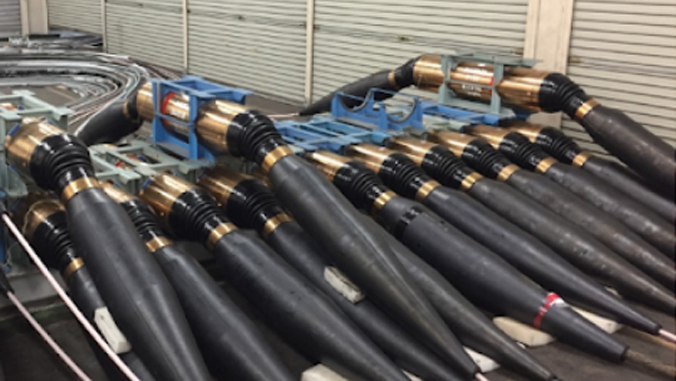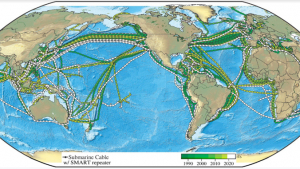
To advance a global network of Science Monitoring And Reliable Telecommunications (SMART) seafloor cables and develop early warning systems for tsunamis and earthquakes, a University of Hawaiʻi at Mānoa researcher received a grant of more than $300,000 from Schmidt Marine Technology Partners (SMTP).
The funding will bolster the international project office based at UH Mānoa and support the development of seismic sensors suitable for operation in SMART cables. Installation of the first SMART systems is planned for 2025.
“By supporting the SMART International Project Office, these funds will help drive SMART cables toward becoming world standard, leading to a global network integrating environmental sensors, such as temperature, pressure and seismic acceleration, into submarine telecommunications cables,” said Bruce Howe, lead investigator of the new grant and professor of Ocean and Resources Engineering in UH Mānoa’s School of Ocean and Earth Science and Technology. “Researchers and communities hope to cost-effectively transform the current telecom network into a combined telecom and planetary-scale ocean, climate and geophysical sensor array capable of informing early warning systems.”

The support from SMTP includes a subaward to Subsea Data Systems, a new startup dedicated to developing SMART systems, to continue their rapid progress toward a commercialized SMART repeater sensor solution. Having such a solution readily available will allow suppliers and system integrators to provide the capability in upcoming new systems.
“We’re truly excited to see this effort gaining momentum and are confident it offers the potential to significantly improve and expand our understanding of the oceans,” said Mark Schrope, director of SMTP.
Reducing risk
SMART Subsea Cables will allow climate change monitoring including ocean circulation and sea level; tsunami and earthquake early warning for disaster risk reduction; seismic monitoring for earth structure and related hazards; quantifying risk to inform sustainable development of coastal and offshore infrastructure, warning of external hazards to cables, and improve routing of cable systems. The 1.4 million kilometers of cable making up the present global network connecting the world is constantly being refreshed and expanded with new cables.
A Joint Task Force on SMART Cable Systems was established by the International Telecommunication Union, World Meteorological Organization and UNESCO-Intergovernmental Oceanographic Commission. Endorsed by the United Nations Ocean Decade for Sustainable Development, the task force is composed of nearly 200 experts from the science, engineering, business and law communities who are investigating and advancing the use of submarine telecommunications cables for ocean and climate monitoring and disaster warning.
Bridging the gap
The UH Mānoa-based International Project Office is the executive office for the Joint Task Force, facilitating individual cable projects globally to build the envisioned global network, capitalizing on the enormous leveraging potential of the industry.
“Ideally the incorporation of SMART capability would become a routine function for the submarine cable industry; in the shorter-term, governments and banks must encourage the process as primary sponsors,” said Howe, who is also the chairperson of the Joint Task Force. “Having Schmidt Marine’s support will help significantly to bridge the gap between concept and implementation and will set a positive precedent for future investment.”
–By Marcie Grabowski

